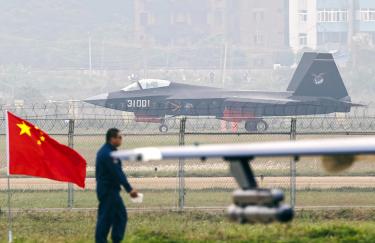China’s massive military modernization program is dominated by preparations for a conflict with Taiwan and the possibility of US intervention, a Pentagon report said on Friday.
The report, which was issued in Washington, said that Beijing is ready to conduct missile attacks and precision strikes against the nation’s air defense systems, air bases, radar sites, missile silos, space assets and communications facilities.
All of this in an attempt to “degrade Taiwan’s defenses, neutralize Taiwan’s leadership or break the public’s will to fight.”
In its annual report to the US Congress on China’s military and security developments over the previous year, the Pentagon said Beijing continues to pursue a long-term, comprehensive military modernization program designed to improve its armed forces capacity to fight short-duration, high-intensity regional conflicts.
“Preparing for potential conflict in the Taiwan Strait remains the focus and primary driver of China’s military investment,” it said.
The report added: “China is increasing its emphasis on preparations for contingencies other than Taiwan, such as contingencies in the East China Sea and South China Sea.”
According to the report, China’s strategy incorporates persuasion and coercion to deter or repress moves toward Taiwanese independence.
Despite a warming in cross-strait relations during the administration of President Ma Ying-jeou (馬英九), “there have been no signs that China’s military posture opposite Taiwan has changed significantly,” it said.
The report said that the People’s Liberation Army (PLA) has developed and deployed military capabilities to coerce Taiwan or to attempt an invasion if necessary.
It said that China appears to be prepared to defer the use of force as long as it believes that unification remains possible in the long term and the costs of conflict outweigh the benefits.
If the decision is made to use force against Taiwan, the report said that China might first signal its readiness and then build up a force “to optimize the speed of engagement over strategic deception.”
Another option would be for China to sacrifice overt, large-scale preparations in favor of surprise to force rapid military and political resolution before other countries could respond, it said, adding that maritime and air blockades are also a possibility.
“China might use a variety of disruptive, punitive or lethal military actions in a limited campaign against Taiwan, likely in conjunction with overt and clandestine economic and political activities,” the report said.
It added: “Such a campaign could include computer network or limited kinetic attacks against Taiwan’s political, military and economic infrastructure to induce fear in Taiwan and degrade the populace’s confidence in the Taiwan leadership.”
“Similarly, PLA special operations forces could infiltrate Taiwan and conduct attacks against infrastructure or leadership targets,” it said.
The report said that the PLA is capable — with few overt preparations — of launching an invasion of small Taiwan-held islands in the South China Sea, such as the Pratas Islands (Dongsha Islands, 東沙群島) or Itu Aba Island (Taiping Island, 太平島).
A PLA invasion of medium-sized, better defended outlying islands such as Matsu or Kinmen is within its capabilities, but would risk galvanizing pro-independence sentiment and generating international opposition.
Large-scale amphibious invasion of Taiwan proper would involve “significant political and military risk” and the report indicates that scenario is unlikely.
Nevertheless, the report says that the PLA Air Force has stationed a large number of advanced aircraft within range of Taiwan, providing them with significant capability to conduct air superiority and ground attack operations.
At the same time, China’s long-range air defense systems provide “a strong layer of defense against a counterattack.”
Source: Taipei Times - 2015/05/10





















